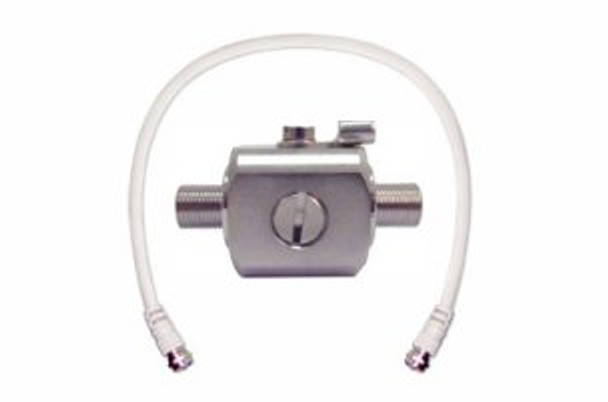AlternativeWireless.com
Wilson 75ohm Lightning Surge Protector and 2ft Patch Cable
- SKU:
- AM859992-950602
- MPN:
- 859992-950602
- Condition:
- New
- Availability:
- OUT OF STOCK
- Short Description:
- 75ohm lightning surge protector with 2ft RG-6 patch cable. Protect your cellular signal booster equipment from lightning strikes.
Description
Wilson Electronics 75ohm lightning surge protector with 2ft patch cable. Protect your cellular signal booster equipment from lightning strikes.
Lightning Surge Protector + 2 Foot RG-6 Patch Cable
Protect your expensive cellular signal booster from lightning strikes with this Wilson Electronics 75ohm Lightning Surge Protector. Works with Wilson Electronics 75ohm signal booster systems.
Kit Comes With:
- Wilson 75ohm Lightning Surge Protector 859992
- 2 Foot Wilson RG-6 Quad Shield Cable 950602
![]() WARNING: Cancer and Reproductive Harm - www.P65Warnings.ca.gov
WARNING: Cancer and Reproductive Harm - www.P65Warnings.ca.gov
FEATURES & SPECIFICATIONS
- Attenuation less than 0.2 dB
- Frequency range up to 3 GHz
- Replaceable gas discharge element
- Weather Proof
- 75ohm
- Surge Protector has F Female Connectors
- RG-6 Cable has F Male Connectors
Replacment Gas Discharge Elements are available if a surge occurs.
Where To Install
Install the Lightning Surge Protector (LSP) close to the signal booster. Attach the cable from the outside antenna to the surge protector, using a short length of low loss cable; attach one end to the Surge Protector and the other to the outside antenna connector on the signal booster. The Surge Protector is bi-directional so it doesn't matter which end goes to the antenna or amplifier. Attach a ground wire (Up to 10 Gauge) to the Lightning Surge Protector on a grounding bus or point where the equipment to be protected is grounded and as close to the equipment as practicable. Be sure and check local (county, city, etc) electrical code requirements for their grounding requirements. Most require a 10- or 12-gauge copper wire from the surge protector to a grounding rod. Use up to a 10 gauge with this Lighting Surge Protector. The depth of the grounding rod will be based on your local department code requirements.
NOTE: To ensure that the completed installation is weather proof, it is imperative that the mating coaxial connectors be sealed using proper materials and procedures.








